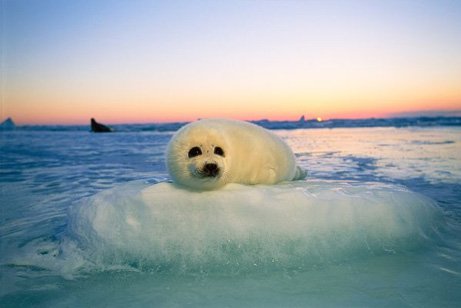
Imagine you’re at the beach on a warm sunny day. You see harbor seals lounging on the rocks or swimming gracefully in the water. It’s a picturesque scene, but beneath that calm surface, changes are brewing. With climate change affecting ocean temperatures, currents, and ice patterns, the very habitats these seals rely on are shifting. So, what exactly does that mean for the harbor seal population? We’ll explore how warming waters, shrinking ice, and other factors are impacting their lives and the ecosystem they inhabit.
The Basics of Harbor Seals
Before we get into the nitty-gritty of climate change, let’s understand what harbor seals are all about. Harbor seals, known scientifically as *Phoca vitulina*, are typically found in coastal waters and bays across the Northern Hemisphere. They’re medium-sized pinnipeds, meaning they have flippers, and are known for their spotted coats and playful nature.
Here’s an interesting fact: harbor seals can hold their breath for up to 30 minutes while diving for fish or crustaceans! They primarily feed on species like herring, mackerel, and salmon. However, the availability of these fish can be drastically affected by changing ocean conditions, which brings us back to the impact of climate change.
Rising Water Temperatures
So, how does warming water affect harbor seals? Well, let me explain. As the global temperature rises, so do the temperatures in our oceans. This warming can disrupt the delicate balance of marine ecosystems. For harbor seals, warmer water can mean a decline in their primary food sources.
When water temperatures increase, fish species may migrate to cooler areas. This means that harbor seals may have to swim farther or dive deeper to find their meals. Think of it like your favorite café suddenly moving to a different neighborhood—you’d have to put in more effort just to get your morning coffee! This extra energy expenditure can be tough on harbor seals, especially for nursing mothers who need to ensure their pups have enough food to grow strong.
Impact on Breeding and Pup Survival
Breeding season is a critical time for harbor seals, typically occurring from late winter to early summer. Climate change is impacting this crucial phase in several ways. For starters, increasing water temperatures can lead to earlier spring seasons, potentially throwing off the timing of seal pupping.
You might wonder why that matters. Well, harbor seal pups are born with a thick layer of blubber to help them stay warm in chilly waters. If temperatures rise too quickly, the pups may not have enough time to develop their insulation before stepping into the water. This can lead to higher mortality rates among young seals. The survival of these pups is essential not just for their species’ future but also for maintaining a balanced ecosystem.
Habitat Loss and Changes in Ice Patterns
Harbor seals often rely on ice and rocky outcrops for resting and birthing their pups. As climate change accelerates, we’re seeing dramatic shifts in ice patterns, especially in regions like Alaska and Canada. The loss of sea ice means fewer safe spaces for seals to rest, breed, and protect their young from predators.
Imagine living in a neighborhood where suddenly half of your favorite hangout spots disappeared. It would make your daily routines more stressful, not to mention limit your options for fun! For harbor seals, the disappearance of ice is a major concern. Without the proper habitat to haul out and rest, these seals face increased competition and stress levels, impacting their ability to thrive.
Increased Competition for Resources
As a ripple effect of habitat loss and changing food availability, competition among harbor seals and other marine mammals is on the rise. With fish migrating and habitat shrinking, harbor seals are not only battling the elements but also competing with other species for food.
This situation creates a challenging environment. Imagine going to a buffet where your favorite dishes have been replaced with options you don’t enjoy. It’s not just a matter of preference; it’s about survival and finding the right resources to thrive. Harbor seals are witnessing this struggle firsthand, which can lead to malnutrition and decreased reproductive success.
Human Impact and Conservation Efforts
Humans play a crucial role in both contributing to climate change and in protecting species like the harbor seal. As we continue to modify our environments through pollution, fishing, and coastal development, the habitats of harbor seals are further compromised.
Fortunately, conservation efforts are underway to protect these charming marine mammals. Organizations are working on initiatives to reduce pollution, manage fisheries more sustainably, and restore habitats. It’s crucial to support these efforts to ensure harbor seals and other wildlife have the best chance of surviving in a rapidly changing world.
Here’s the thing: protecting harbor seals isn’t just about saving a cute creature; it’s about maintaining healthy ecosystems. Healthy oceans contribute to our planet’s overall health, making it essential to care for our marine friends.
As climate change continues to reshape our planet, harbor seals stand at a crossroads. Each shift in temperature, ice, and food availability profoundly impacts their future. By understanding these challenges, we can work together to foster a healthier planet for harbor seals and all the diverse life forms we share it with.
Honestly, every small action counts—reducing waste, supporting conservation programs, and raising awareness can go a long way. The future of harbor seals depends on all of us, so let’s take steps toward a sustainable future together. After all, we share this planet, and it’s our responsibility to look out for one another, even the seals!
